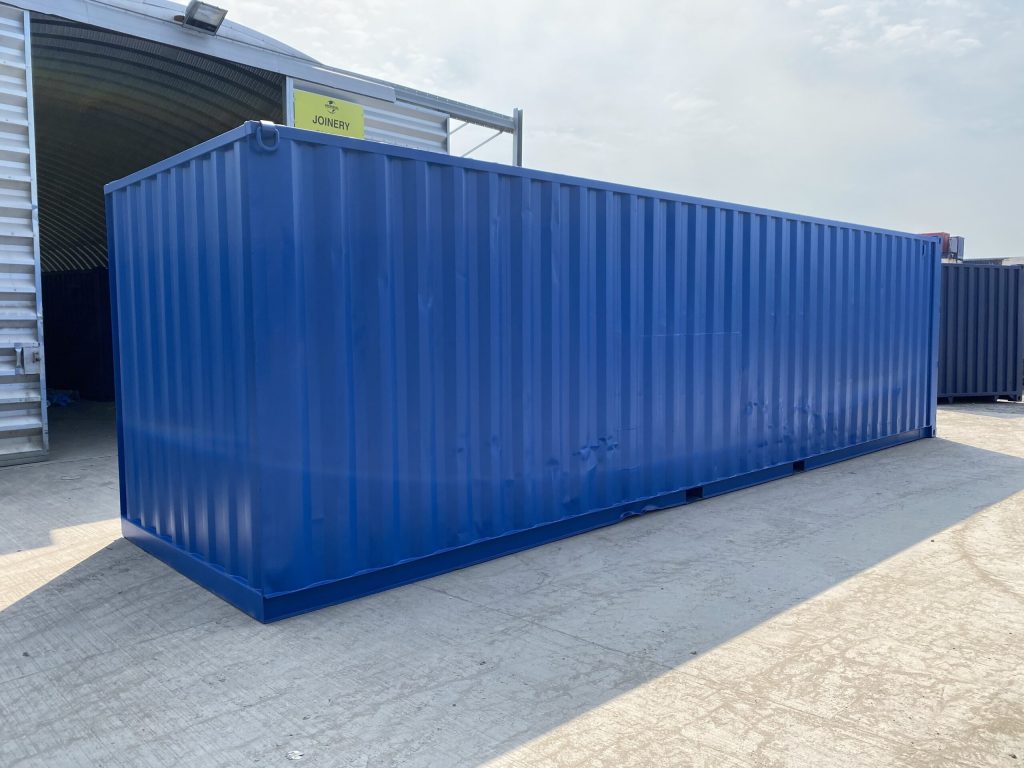Understanding the 30 Ft Container: A Comprehensive Guide
In the realm of shipping and logistics, containers are the backbone of global trade. Amongst the numerous sizes readily available, the 30 ft container sticks out for its adaptability and many applications. This article intends to supply a comprehensive understanding of the 30 ft container, its specifications, various types, uses, advantages, and an in-depth FAQ area to answer typical inquiries.
What is a 30 Ft Container?
A 30 ft container is a shipping container that measures approximately 30 feet in length. It is created to help with the storage and movement of items across long ranges. These containers are utilized at ports and shipping docks, in warehouses, and even on building websites for short-term storage.
Requirements of a 30 Ft Container
Here is a table summarizing the crucial requirements of a 30 ft container:
| Attribute | Measurement |
|---|---|
| Length | 30 ft (9.14 m) |
| Width | 8 ft (2.44 m) |
| Height | 8.5 ft (2.59 m) (standard) |
| Weight | Approximately 4,500 pounds (2,041 kg) (empty) |
| Volume | 2,389 cu ft (67.6 cbm) |
| Maximum Payload | Up to 65,000 lbs (29,483 kg) |
Types of 30 Ft Containers
- Requirement Dry Container: This is the most typical kind of 30 ft container, perfect for transferring non-perishable products.
- Reefer Container: A cooled 30 ft container that preserves temperature level, appropriate for transporting disposable products like food and pharmaceuticals.
- Open Top Container: This container has an open top that enables for the loading of oversized freight that can not fit through standard doors.
- Flat Rack Container: A flat platform with no sides or roof, ideal for heavy machinery and large items.
- High Cube Container: This version is taller than a basic container, offering extra area for larger cargo.
Comparison of Container Types
| Type | Ideal Use | Secret Feature |
|---|---|---|
| Requirement Dry | General freight | Enclosed, weatherproof |
| Reefer | Disposable items | Temperature control |
| Open Top | Oversized freight | Open top for packing |
| Flat Rack | Heavy equipment | Flat, no sides |
| High Cube | Bulk or large products | Additional height |
Uses of a 30 Ft Container
The 30 ft container is utilized in various industries due to its adaptable nature. Here are some common applications:
- Construction Storage: Temporary site storage for tools and products.
- Retail and Wholesale: Transport of products to retail areas.
- Residential Moving: Long-distance moving of household possessions.
- Export and Import: Facilitating goods transport between nations.
- Occasion Storage: On-site storage for occasions like celebrations and fairs.
Advantages of a 30 Ft Container
- Flexibility: Suitable for a large range of products, from developing products to personal valuables.
- Cost-efficient: Ideal for organizations looking for to optimize space without incurring high shipping costs.
- Durability: Made from robust materials that safeguard the contents from environmental elements.
- Security: Containers can be locked, supplying comfort for saved items.
- Movement: They can be easily transferred by truck, train, or ship.
Often Asked Questions (FAQ)
1. What can fit into a 30 ft container?
A 30 ft container can accommodate around 2,389 cubic feet of freight. It is capable of carrying family items, industrial equipment, and even automobiles, depending upon the plan and size.
2. How much does a 30 ft container weigh?
An empty 30 ft container generally weighs about 4,500 lbs (2,041 kg).
3. Can I personalize a 30 ft container?
Yes, lots of providers offer modification alternatives, including insulation, shelving, ventilation, and electrical installations.
4. Where can I buy or lease a 30 ft container?
30 ft containers can be purchased or leased from specialized shipping container providers, online markets, and regional rental companies.
5. How do I prepare a 30 ft container for transportation?
Ensure that the container is tidy and totally free of dangerous products, secure your items effectively inside, and make certain any required documentation is complete for customs if shipping internationally.
6. What is the optimum weight a 30 ft container can hold?
The optimum payload for a standard 30 ft container is usually up to 65,000 pounds (29,483 kg), depending upon the container's structural integrity and loading procedures.
The 30 ft container plays a critical role in modern logistics and trade, using a flexible solution for various storage and transport requirements. Its varied types cater to distinct requirements, making it a popular option amongst organizations and people alike. Whether thinking about cogcontainersltd.com for shipping, storage, or construction functions, understanding its functions and uses is important for making a notified decision.
By familiarizing themselves with the requirements, benefits, and prospective applications, customers and organizations can efficiently utilize 30 ft containers to satisfy their varied needs, consequently boosting their operational performance and efficiency.

